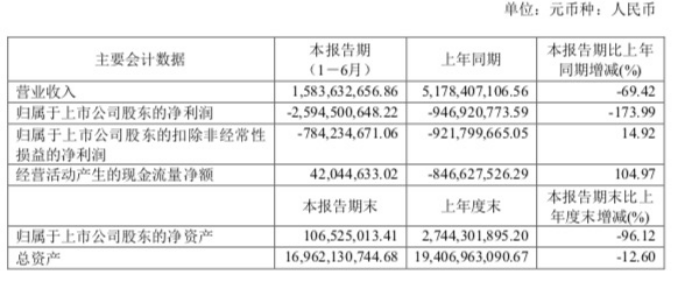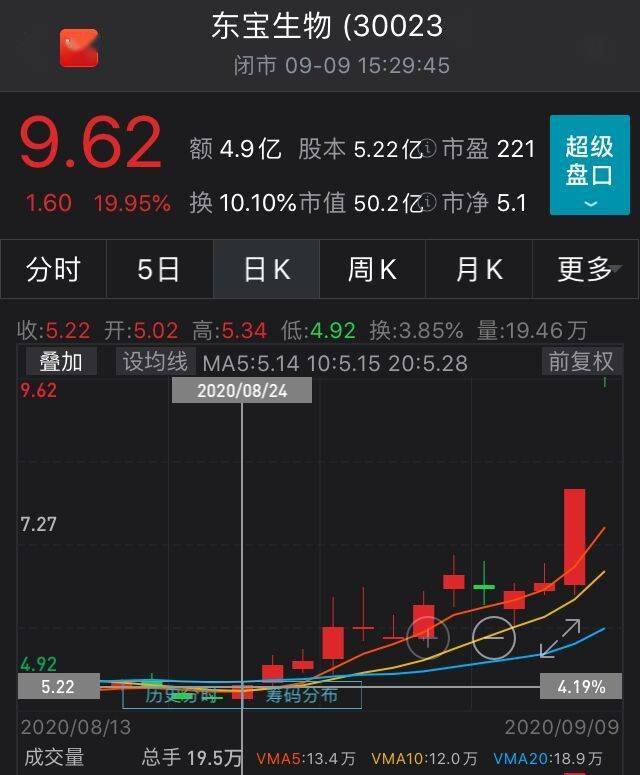еҰӮжһңдёҠйқўиҝҷж ·й…ҚзҪ®пјҢеҗҜеҠЁжңҚеҠЎе°ҶдјҡжҠҘй”ҷпјҡ
Caused by: JAVA.lang.IllegalStateException: No thread-bound request found: Are you referring to request attributes outside of an actual web request, or processing a request outside of the originally receiving thread? If you are actually operating within a web request and still receive this message, your code is probably running outside of DispatcherServlet: In this case, use RequestContextListener or RequestContextFilter to expose the current request.at org.springframework.web.context.request.RequestContextHolder.currentRequestAttributes(RequestContextHolder.java:131) ~[spring-web-6.0.7.jar:6.0.7]иҜҘй”ҷиҜҜзҡ„еҺҹеӣ е°ұжҳҜдҪ еңЁдёҖдёӘеҚ•дҫӢbeanдёӯжіЁе…ҘдёҖдёӘrequestдҪңз”Ёеҹҹзҡ„beanпјҢиҖҢrequestдҪңз”Ёеҹҹbeanзҡ„з”ҹе‘Ҫе‘ЁжңҹжҳҜеңЁдёҖдёӘwebиҜ·жұӮејҖе§ӢеҲӣе»әзҡ„пјҢжүҖд»ҘиҝҷйҮҢдҪ еҪ“然жҳҜжІЎжі•жіЁе…Ҙзҡ„ гҖӮ
и§ЈеҶіеҠһжі•пјҡ
- @Scopeи®ҫзҪ®д»ЈзҗҶжЁЎејҸ
@Component@Scope(value = https://www.isolves.com/it/cxkf/jiagou/2024-01-05/"request", proxyMode = ScopedProxyMode.TARGET_CLASS)public class Person {}жөӢиҜ•з»“жһңScopeController: com.pack.scopes.Person@106a9684 - 275420804PersonService: com.pack.scopes.Person@106a9684 - 275420804ScopeController: com.pack.scopes.Person@64396678 - 1681483384PersonService: com.pack.scopes.Person@64396678 - 1681483384жҜҸж¬ЎиҜ·жұӮжҺҘеҸЈйғҪиҺ·еҸ–зҡ„дёҚжҳҜеҗҢдёҖдёӘе®һдҫӢ гҖӮ并且еңЁдёҖдёӘе®Ңж•ҙзҡ„иҜ·жұӮдёӯиҺ·еҸ–зҡ„PersonйғҪжҳҜеҗҢдёҖдёӘ гҖӮ- дҪҝз”Ё@RequestScope
@Scope(WebApplicationContext.SCOPE_REQUEST)public @interface RequestScope {@AliasFor(annotation = Scope.class)// и®ҫзҪ®еҘҪдәҶдҪҝз”Ёд»ЈзҗҶScopedProxyMode proxyMode() default ScopedProxyMode.TARGET_CLASS;}2.4 дјҡиҜқ(session)@Component@Scope(value = https://www.isolves.com/it/cxkf/jiagou/2024-01-05/"session", proxyMode = ScopedProxyMode.TARGET_CLASS)// дёҺrequestдёҖж ·пјҢеҝ…йЎ»и®ҫзҪ®д»ЈзҗҶжЁЎејҸжҲ–иҖ…дҪҝз”ЁдёӢйқўиҝҷдёӘжіЁи§Ј// @SessionScopepublic class Person {}жөӢиҜ•ScopeController: com.pack.scopes.Person@2b56038d - 727057293PersonService: com.pack.scopes.Person@2b56038d - 727057293ScopeController: com.pack.scopes.Person@2b56038d - 727057293PersonService: com.pack.scopes.Person@2b56038d - 727057293еӨҡж¬Ўи®ҝй—®йғҪжҳҜеҗҢдёҖдёӘsessionпјӣдҪ еҶҚжҚўдёӘжөҸи§ҲеҷЁи®ҝй—®ScopeController: com.pack.scopes.Person@1aa201fd - 446824957PersonService: com.pack.scopes.Person@1aa201fd - 446824957ScopeController: com.pack.scopes.Person@1aa201fd - 446824957PersonService: com.pack.scopes.Person@1aa201fd - 446824957жӯӨж—¶еҜ№иұЎе°ұжҳҜдёҖдёӘж–°зҡ„дәҶпјҢдёҚеҗҢзҡ„жөҸи§ҲеҷЁи®ҝй—®еҪ“然дёҚжҳҜеҗҢдёҖдёӘsessionдәҶ гҖӮ2.5 еә”з”Ё(application)
@Scope(value = https://www.isolves.com/it/cxkf/jiagou/2024-01-05/"application", proxyMode = ScopedProxyMode.TARGET_CLASS)// @ApplicationScope// йғҪжҳҜwebзҺҜеўғпјҢжүҖд»Ҙжғ…еҶөйғҪдёҖж ·public class Person {}жөӢиҜ•360жөҸи§ҲеҷЁ
ScopeController: com.pack.scopes.Person@6371b4b6 - 1668396214PersonService: com.pack.scopes.Person@6371b4b6 - 1668396214ChromeжөҸи§ҲеҷЁScopeController: com.pack.scopes.Person@6371b4b6 - 1668396214PersonService: com.pack.scopes.Person@6371b4b6 - 1668396214他们жҳҜеҗҢдёҖдёӘеҜ№иұЎ пјҢ applicationдҪңз”Ёеҹҹз”ҹе‘Ҫе‘ЁжңҹдёҺж•ҙдёӘеә”з”ЁдёҖж · пјҢ еҸӘжңүдҪ е…ій—ӯдәҶжңҚеҠЎеҷЁпјҢеңЁеҗҜеҠЁеҗҺжүҚдјҡжҳҜеҶҚйҮҚж–°еҲӣе»әзҡ„beanеҜ№иұЎ гҖӮ3. webдҪңз”ЁеҹҹеҺҹзҗҶ3.1 жіЁеҶҢдҪңз”Ёеҹҹ
public abstract class AbstractApplicationContext {public void refresh() {postProcessBeanFactory(beanFactory);}}public class AnnotationConfigServletWebServerApplicationContext {protected void postProcessBeanFactory(ConfigurableListableBeanFactory beanFactory) {super.postProcessBeanFactory(beanFactory);}}public class ServletWebServerApplicationContext {protected void postProcessBeanFactory(ConfigurableListableBeanFactory beanFactory) {// ...registerWebApplicationScopes();}private void registerWebApplicationScopes() {WebApplicationContextUtils.registerWebApplicationScopes(getBeanFactory());}}public abstract class WebApplicationContextUtils {public static void registerWebApplicationScopes(ConfigurableListableBeanFactory beanFactory) {registerWebApplicationScopes(beanFactory, null);}public static void registerWebApplicationScopes(ConfigurableListableBeanFactory beanFactory,@Nullable ServletContext sc) {// жіЁеҶҢдҪңз”ЁеҹҹbeanFactory.registerScope(WebApplicationContext.SCOPE_REQUEST, new RequestScope());beanFactory.registerScope(WebApplicationContext.SCOPE_SESSION, new SessionScope());if (sc != null) {ServletContextScope appScope = new ServletContextScope(sc);beanFactory.registerScope(WebApplicationContext.SCOPE_APPLICATION, appScope);}}}иҝҷйҮҢжҜҸдёҖз§ҚwebдҪңз”ЁеҹҹйғҪжңүдёҖдёӘеҜ№еә”зҡ„Scopeе®һзҺ°RequestScopeпјҢSessionScopeпјҢServletContextScope гҖӮ
жҺЁиҚҗйҳ…иҜ»
- Spring Boot Starterзҡ„еҺҹзҗҶ
- Spring дёғз§ҚдәӢеҠЎдј ж’ӯжҖ§д»Ӣз»Қ
- ж‘©йЈһдҫҝжҗәжҰЁжұҒжқҜдҪ“йӘҢ
- з®Җжҳ“зүҲзҡ„SpringBootжҳҜеҰӮдҪ•е®һзҺ°зҡ„пјҒпјҒпјҒ
- й’“йұјйҘөж–ҷжҢҮеҚ—пјҡеҗ„з§ҚйҘөж–ҷзү№зӮ№дёҺдҪҝз”ЁжҠҖе·§
- еҗ„з§Қй’ўжқҗзҡ„е°әеҜёдёҺйҮҚйҮҸеӨ§е…Ё
- зҪ‘з»ңз”ЁиҜӯжңүйӮЈдәӣеҗ„жҢҮд»Җд№Ҳж„ҸжҖқ еҗ„з§ҚзҪ‘з»ңз”ЁиҜҚзҡ„ж„ҸжҖқ
- Springйқһеёёе®һз”Ёзҡ„жҠҖе·§пјҢдҪ зЎ®е®ҡзҹҘйҒ“пјҹ
- еҪ“е№ҙдёҖ瓶йӣӘиҠұиҶҸй—ҜеӨ©дёӢпјҢзҺ°еңЁжҠӨиӮӨз”Ёзҡ„еҗ„з§Қж°ҙйғҪжҳҜжҷәе•ҶзЁҺеҗ—пјҹ
- Java Lambda иЎЁиҫҫејҸеҗ„з§Қз”Ёжі•пјҢдҪ йғҪдјҡдәҶеҗ—
















